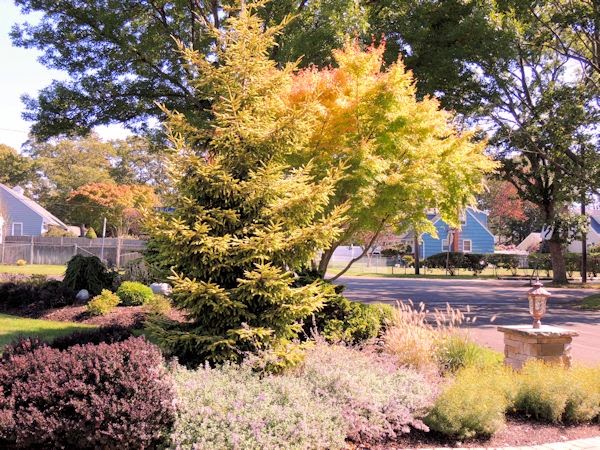 |
| October Garden Chores |
Autumn has arrived in the northeast
and there are several important chores to get accomplished in the garden before winter arrives and to give your landscape a good start for next spring. Here is a to-do list to help get
your started. These tips apply to USDA zone 7 but can be useful for other gardening zones as well.
(1)
Remove those weeds! There is
nothing more annoying than starting up a new gardening season and being inundated with weeds. Removing weeds now in the fall will rid their
seeds so they won’t be able to multiply over the winter season. Dandelions have long tap roots that can be difficult to remove, but I have found the perfect tool! This garden weeder to the left effortlessly removes the entire root. It also works well with those nasty clover that have been widespread this season. Being proactive now will save time later.
(2) Plant Spring Bulbs & Wildflowers: Now is the time to plant those spring flowering bulbs and
wildflowers! Some popular bulbs planted
in the month of October are Tulips, Daffodils, Crocus, Allium and Hyacinths. Some
northeastern wildflowers include Rudbeckia, Coneflower, Cornflower and Poppies. For self-sowing perennials, biennials and
annuals leave the seed heads on existing plants so they can drop to the ground and
re-seed for next spring.
(3) Tree & Shrub Protection: Remove any diseased or dead branches from trees and shrubs to prevent
winter damage. Also remove water sprouts
and sucker growth.
(4) Insect Control: Now is the time to apply dormant oil onto trees and shrubs for winter protection from insects. Insects such as scale and aphids lay their
eggs in September which overwinter causing early infestations in spring. Dormant oil is prepared to be safe for beneficial insects,
birds, mammals and humans and smothers out harmful insect larvae before they hatch. Certain plants are sensitive to dormant oil so be sure to read all specifications carefully.
(5) Clean Up Garden Beds: Remove infected leaves from perennials and herbaceous shrubs. Faded peony,
roses, hosta, daylily and coneflower leaves are very susceptible to fungal
infections and powdery mildew. Once the
foliage has died back for the season cut it completely back to the ground and make
sure the ground is clean around the plant.
Cover with a fine layer of mulch after clean-up to protect the roots and
dispose of the infected leaves into the trash, not the compost pile.
(6) Prune Perennials: Prune certain perennials to a couple of
inches above the ground once they are done blooming for the season. Perennials that benefit from winter pruning include salvia, coreopsis,
sedum, gaillardia, nepeta and daylily. Liriope is
somewhat sensitive to cold and can be pruned half way but not all the way
down. Some perennials are very cold sensitive such as Heuchera
(coral bells), astilbe, liatris, lavender, perovskia
(russian sage) and lupine are best to be left until early
spring.
(7) Clean up Leaves: At the end of the month remove leaves from
the lawn and garden. Leaves left over winter can harbor fungal disease and
damage your lawn or perennials. Either add your leaves to a compost
area or shred them. A fine layer of shredded leaves can add
valuable organic matter to your garden and can be used as mulch protection for
your plants.
(8) Dig Up Tender Bulbs: Dig up tender bulbs such as gladiolus, canna lily and
dahlias that do not survive the winter at the end of the month (before frost) and
store them in a cool dry place such as a crawl space or garage in either a
paper bag or in a container of vermiculite.
(9) Mulch Garden Beds: Check and apply mulch to your gardens
around perennials and shrubs in areas where the temperatures fall below freezing for
long periods of time. The mulch serves as insulation for the plants and provides some
important protection during winter freezes and thaws and also helps to
prevent moisture loss.
(10) Continue Watering: Continue to water evergreens, trees and
shrubs until freeze warnings (end of October-beginning of November). It is important that prior to winter that there is significant moisture
around your plants before the ground freezes in order to ensure their health. Evergreens
are especially prone to desiccation and winter burn caused by drying winds and
lack of moisture during the cold season.
Have you started your fall garden chores? I hope you find the above October gardening tips to be helpful.
As Always...Happy Gardening!
























.jpg)





























